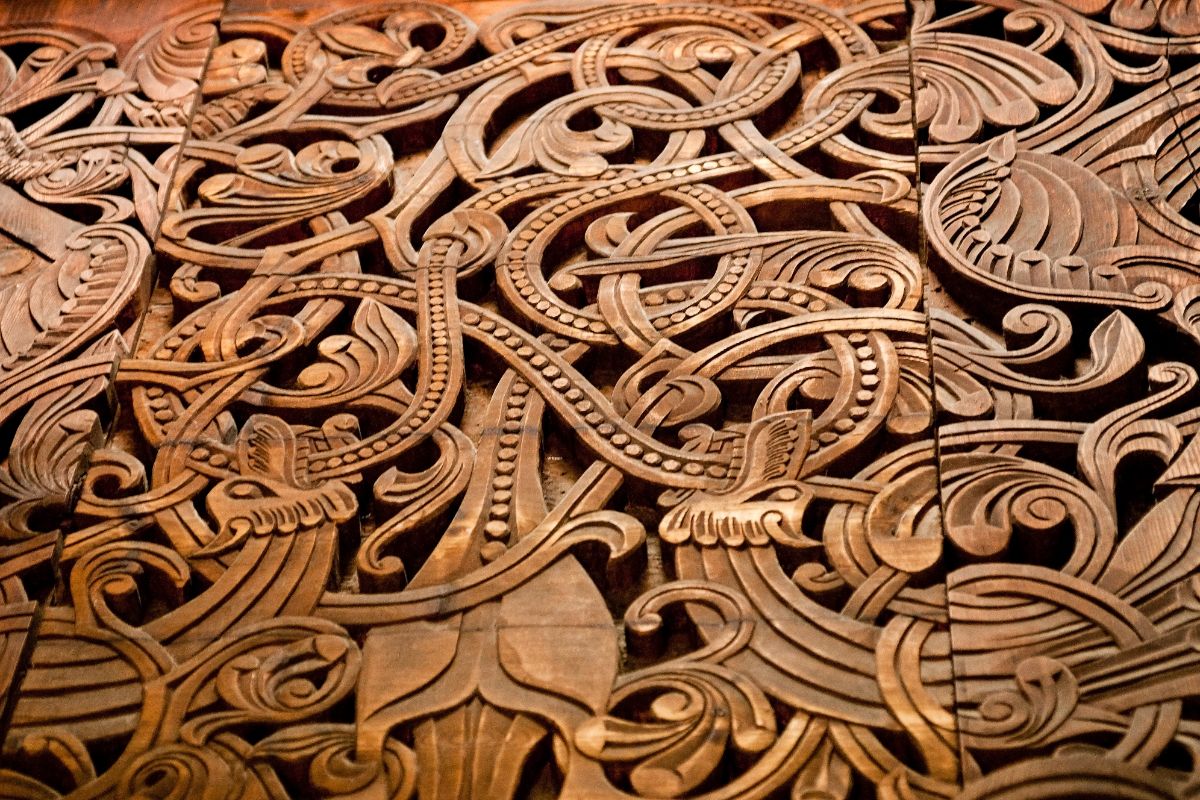Artisans of the Viking age excelled in woodwork and metalwork. Their brooches, weapons, implements, and ship timbers often featured inlaid or carved abstract animal forms and elaborate interlacing patterns. In addition, runic texts and accompanying scenes were inscribed on wooden items, Viking ship timbers, stones, and rocks.
Our knowledge of Viking art history is limited because only the most durable materials last the thousand years or so since they were made.
Consequently, the only examples that generally stand the test of time are stone and metal ones. Very few preserved bone, wood, textile, or ivory artifacts have ever been found.
What Are The Characteristics Of Viking Art?
Viking art dates from the late 8th to the early 12th century. It would typically involve relief carving and engraving functional objects of wood, metal, and stone with depictions of animals and abstract patterns.
What Kind Of Art Did Vikings Do?
On Wood
Wood was the most common medium for Viking artists to use. It was plentiful and easy to work with.
Unfortunately, its relatively soft texture means that it rots with time. Hence, the early 9th-century Oseberg ship-burial wood carvings and the 12th-century carved decorations of the Urnes Stave Church being especially important.
James Graham-Campbell, the British archaeologist and Emeritus Professor of Medieval Archaeology at University College London, says:
These remarkable survivals allow us to form at least an impression of what we are missing from the original corpus of Viking art. However, wooden fragments and small-scale carvings in other materials (such as antler, amber, and walrus ivory) provide further hints. The same is inevitably true of the textile arts, although weaving and embroidery were well-developed crafts.
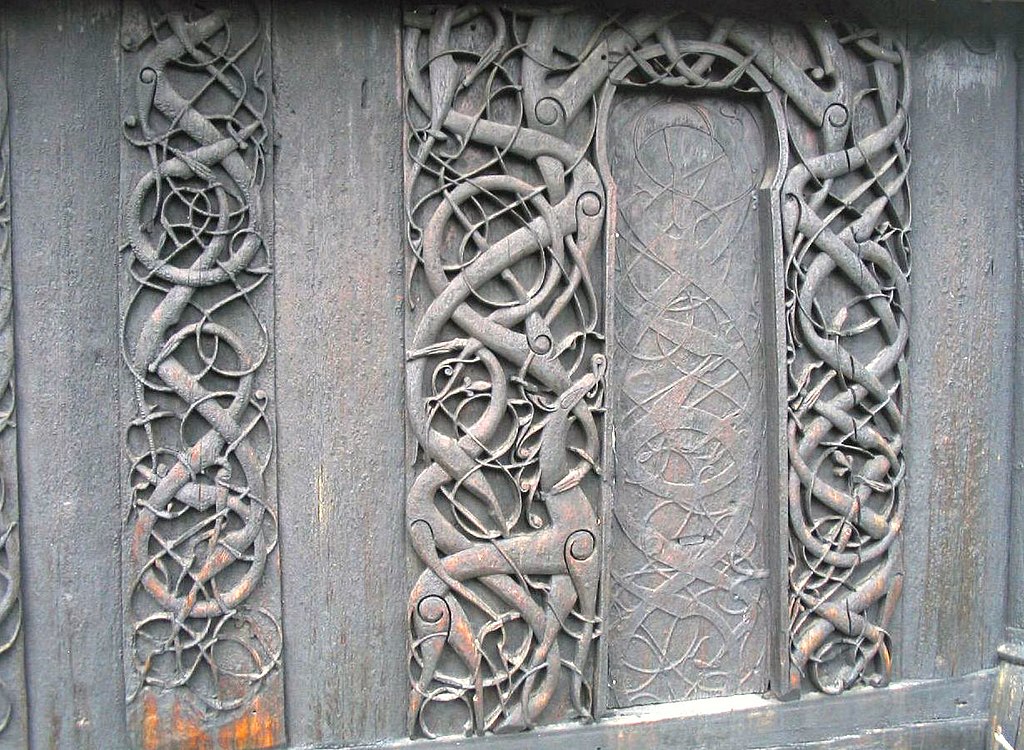
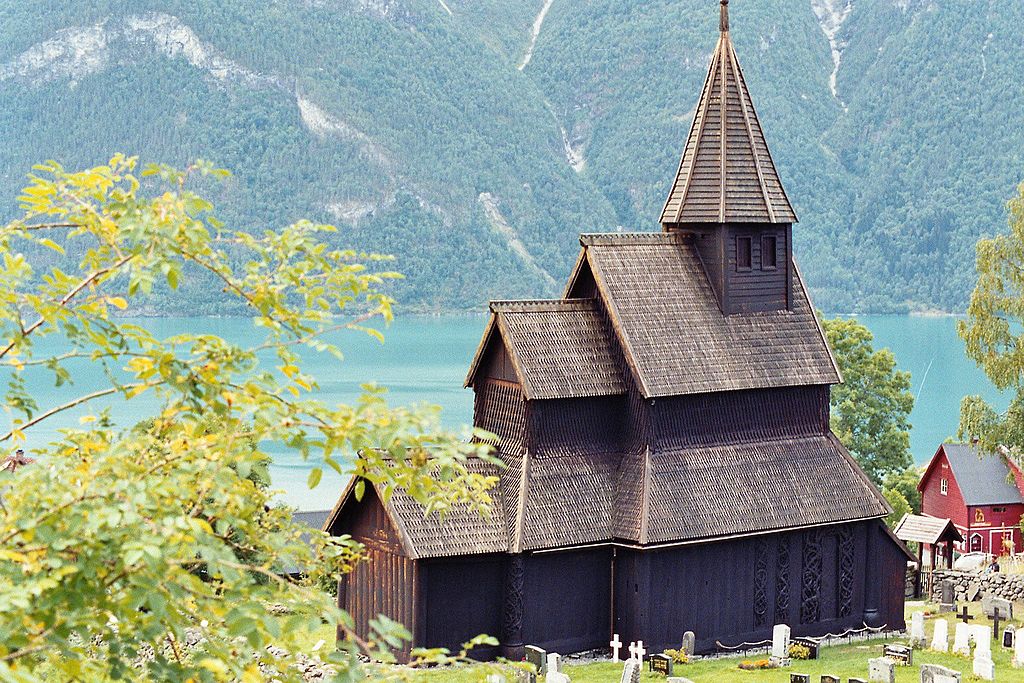
On Stone
From archaeological evidence found up to now, stone carvings or inscriptions were not a widespread form of Scandinavian artwork. The royal monument at Jelling in Denmark and the picture stones on the Swedish island of Gotland (Jutland) are the only Iron Age pre-Christian examples discovered in Scandinavia.
The stones are nearly 10 feet high and displayed in the Gotland Museum in Visby.
The examples of carved stones produced after the arrival of Christianity are more common.
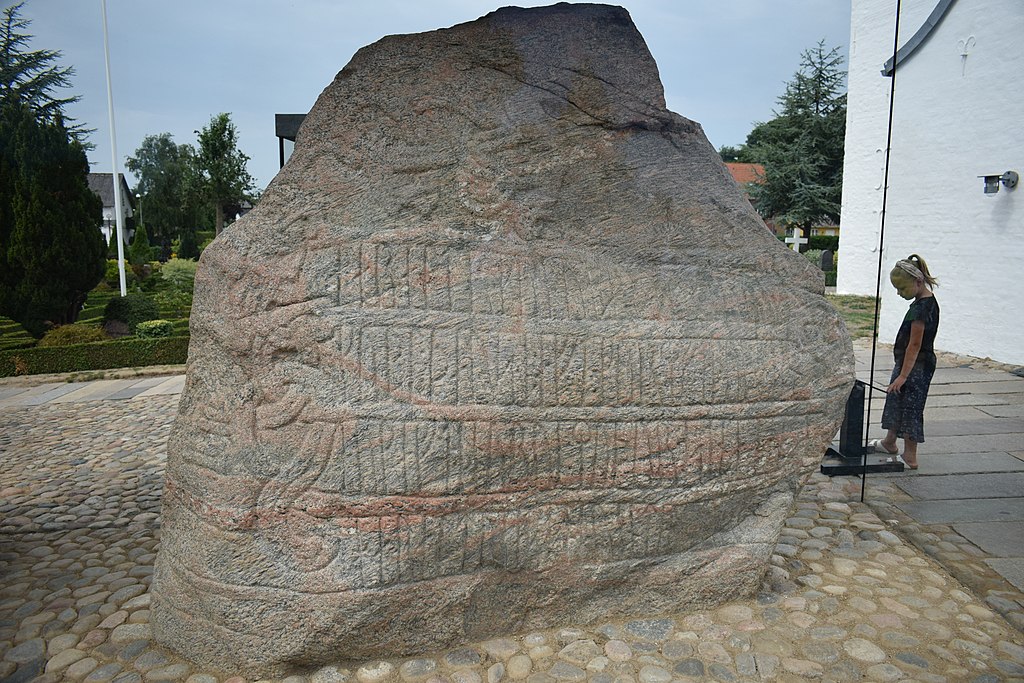
Using Metal
Due to its durability, examples of Viking metalwork are much more commonplace. Precious metals such as gold and silver are especially durable.
Brooches were used to fasten cloaks and could be made of base or more precious metals. They had several designs ranging from disc to penannular. Women used iron or bronze “tortoise” broaches to attach shoulder straps to their dresses.
Norsemen and women used rings for fingers and arms, and the women wore beaded necklaces. Decoration and inlay were common on weapon blades, axe heads, and sword hilts.
The most basic jewelry was usually made of bronze, while silver was the most used precious metal. Gold was reserved for royalty or the wealthier members of Norse society, such as merchants or jarls (chieftains).
Significant examples of decorative metalwork were recovered from burial sites. Vikings liked to place “grave goods” or important belongings when interring corpses. They would be buried fully dressed and accompanied by weapons and other decorative items.
Many Viking coins have been discovered. These are normally made of silver, reflecting how they used currency. Vikings would cut the silver into pieces – called “hacksilver” – to pay for items.
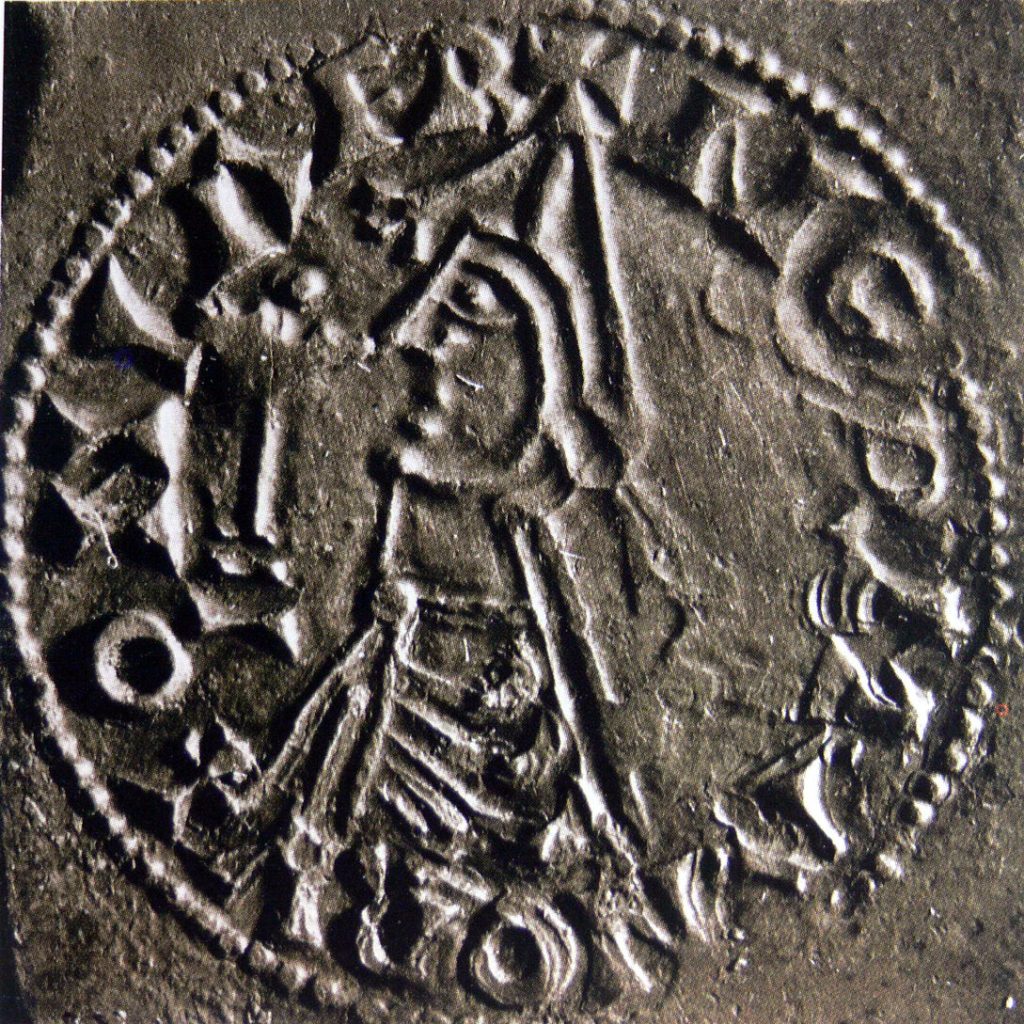
Other Sources
Descriptions of Norse art are present in Skaldic poetry. Bragi Boddason, the 9th-century skald, and Úlfr Uggason, the 10th-century poet, mention the scene of Thor’s attempt to land the giant serpent Jörmungandr on a shield and in a painting in a hall in Iceland.
What Are The Styles Of Viking Art?
Many examples of Viking art featured stylized animal shapes of real animals or mythological ones, such as dragons or huge serpents. There were six main art styles:
1. Borre style
The Borre style is named after a burial mound discovered in Borre, Norway.
Borre-style artwork started around the 9th to 10th century and featured tight double and triple-strand ribbon interlacing ending in cat-like heads, single animals gripping borders, and ring-chain patterns. The examples also feature curly loops and pretzel-like knots.
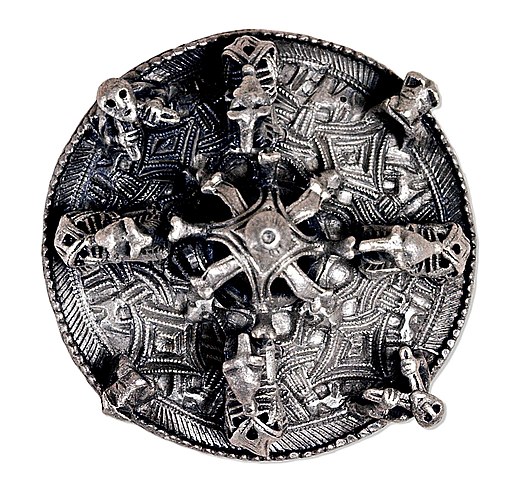
2. Jellinge Style
This style takes its name from the town called Jelling in Denmark. Art experts say this style is a progression of the earlier Borre style.
The Jellinge style features a mixture of wavy curves and even outlines with no tapers or indents. Its interlaced style is more restrained, with double contours and single and double-strand ribbons.
A common Jellinge-style image was two mirrored S-shaped ribbon animals, seen on several brooches and mounts.
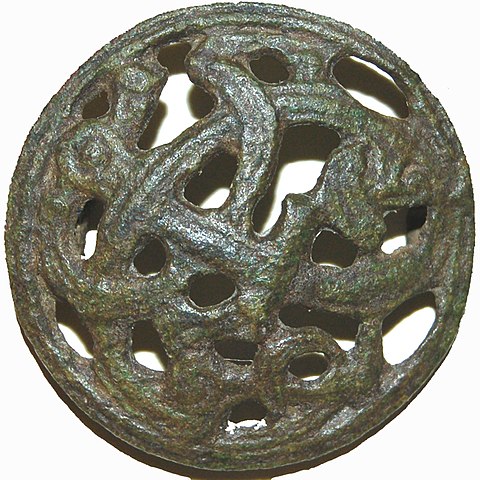
3. Mammen Style
Taking its name from a grave site discovered near Mammen in Denmark, Mammen-style art is characterized by its use of long, wavy, loosely-scrolled tendrils.
It features semi-open interlacing with a visible background and single and double-strand ribbons.
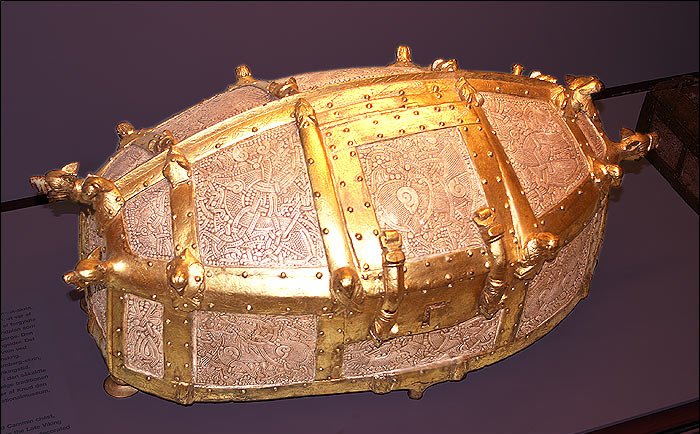
4. Oseberg Style
The name of this style came from the Oseberg Viking longship discovered near Tønsberg, Norway, at the beginning of the 20th century. Five animal head posts on the ship were thought to represent the animals sacrificed along with the boat.
Oseberg-style art often uses squat animals with round eyes and features fronds. Other common themes are loops and ribbons with single, double, and triple strands.
A typical Oseberg Style motif is the so-called “gripping beast.”
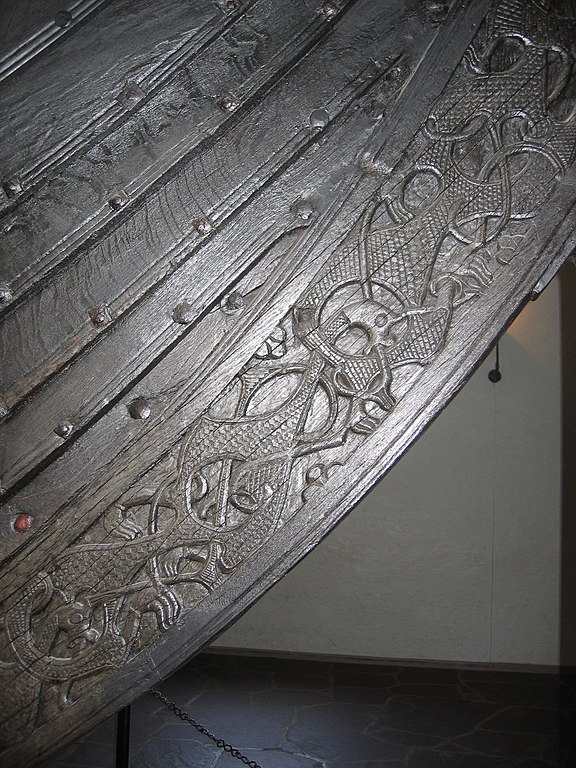
5. Ringerike Style
Ringerike-style images often feature singular or clusters of short and slim tendrils. It uses single or figure-of-eight loops and single or double-strands of ribbons.
It is the only style that uses stone as a medium; all the others use wood or metal.
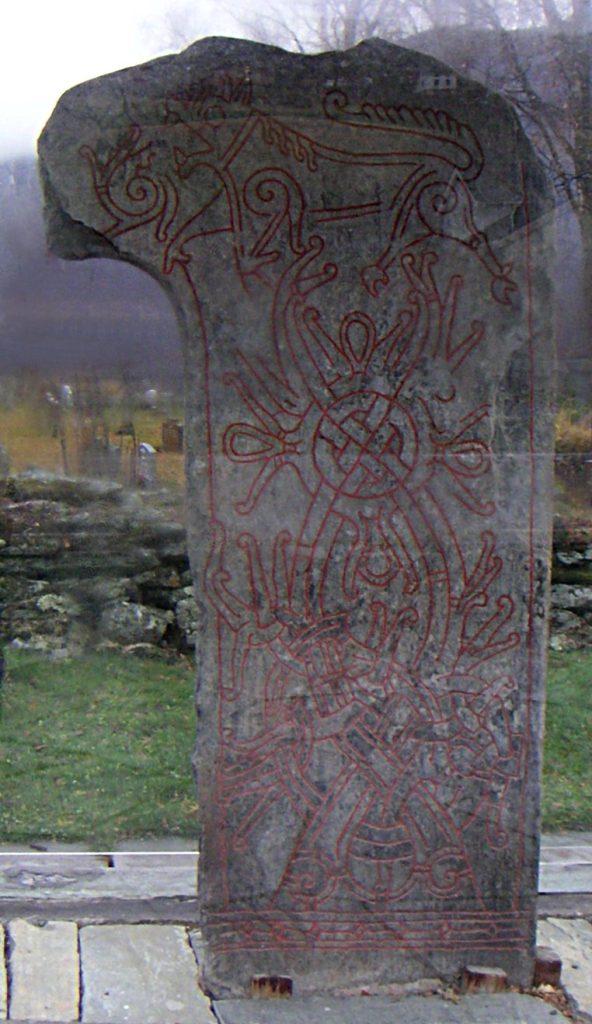
6. Urnes Style
This style is the most recent and Christian-influenced of the six types.
The Urnes style is recognizable for depicting animals with elongated proportions and a head that was almost just a ribbon end. Hip joints were spirals.
It would feature open interlacing of single-strand ribbons on an invisible background.
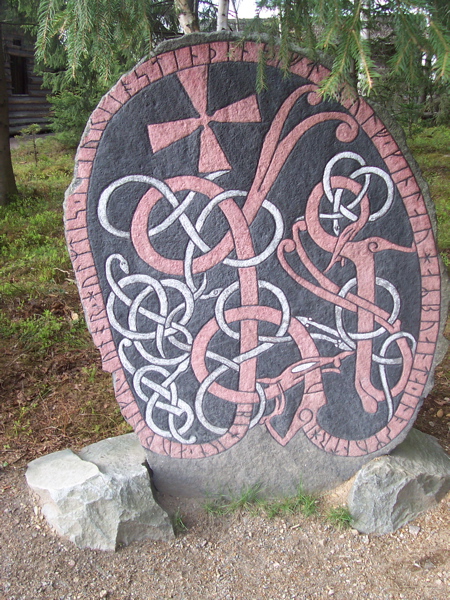
Which Style Is The Most Common?
The Borre and the Urnes were the longest-lasting styles.
They lasted for about a hundred years, from the mid-9th to mid-10th and the mid-11th century to the mid-12th century. The Urnes is the most recent and, therefore, also perhaps the best known.
The Jelling style is probably the most distinctive.
Most Prominent Examples Of Viking Art
The best-known works of Viking art are the Mammen axe, the Vang Stone, and the Oseburg and Borre longships.
The Vang Stone
The Vang Stone is a rune stone from the early 9th century and resembles the Danish Jelling stones.
It is a picture stone with many images of animals and runic characters from the Younger Futhark (the runic alphabet). The translation of the inscription is “Gåse’s sons erected this stone for Gunnar, [their] brother’s son.”
The images are in the Ringerike style, depicting serpent-like lines and leaves. These are in the shape of a cross or tree, with a lion at the top.
The stone is about 7 feet high and used to stand outside the Stave Church in Vang. It is now in Karpacz, Poland.
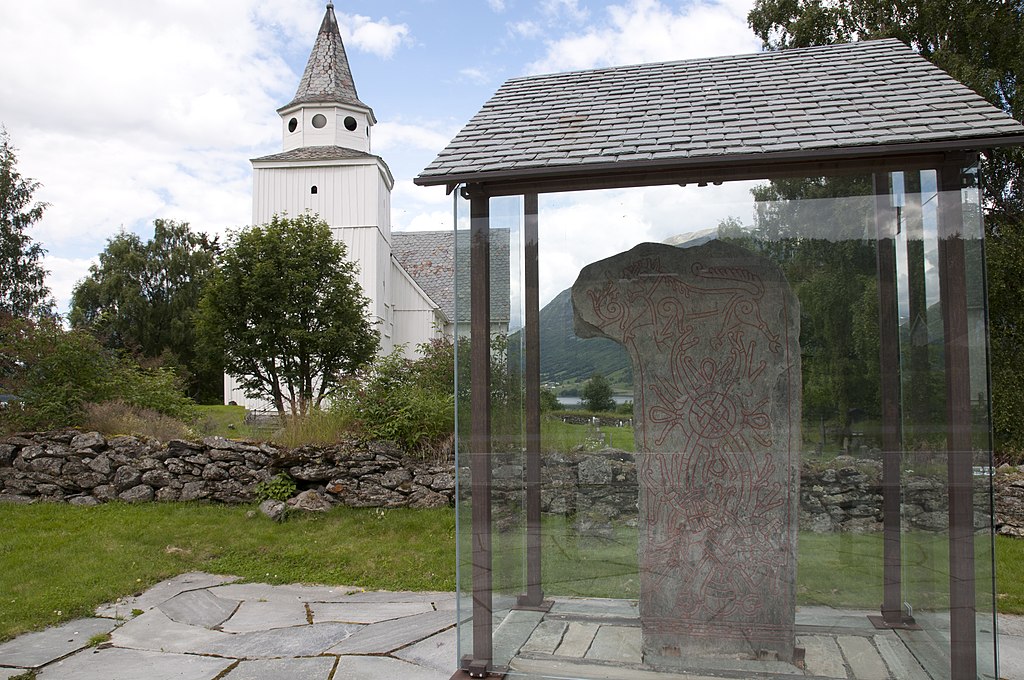
The Oseburg Longship
The Oseburg Longship is a Norwegian Viking vessel constructed in 820 AD and excavated in the early 20th century.
It was reassembled after the discovery and is now on display at the Viking Ship Museum in Bygdøy, Oslo.
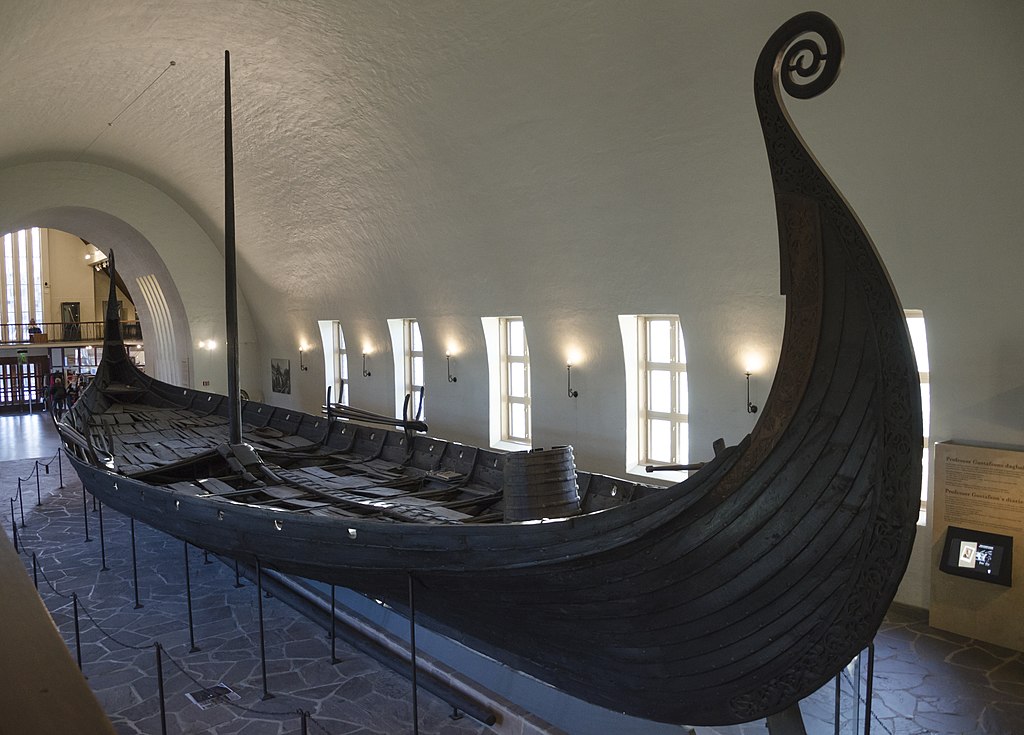
The Tune Longship
This vessel was the first Viking ship discovered in Norway and was revealed during the excavation of a burial mound at Borre, Denmark, in 1852.
The boat had largely rotted away due to it lying within glacial soil for nearly a thousand years.
The Mammen Axe
The Mammen axe was discovered in a grave near Mammen, Denmark. It is made of iron with silver inlay. A tree motif, possibly representing Yggdrasil, the World Tree of Norse mythology, is on one side, with a bird-style image on the other.
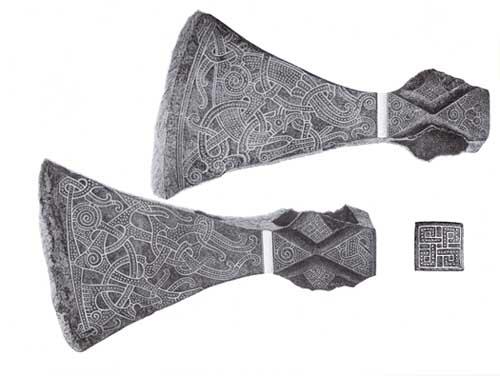
What Is The Difference Between Viking Art And Anglo-Saxon Art?
Viking, Anglo-Saxon, and Celtic art were similar as they shared many common influences.
Anglo-Saxon was surprisingly complex and ornate for its time. At first glance, it is sometimes difficult to decipher what the image or carving portrays as the style appears to be a jumble of face masks and animal-like limbs.
Viking art, although ornate and decorative, was less intricate. It also has a clear chronological progression, unlike its Anglo-Saxon counterpart.
Both races used runes for varied reasons: Viking runes were considered protective symbols, while the Anglo-Saxons believed they were charms.
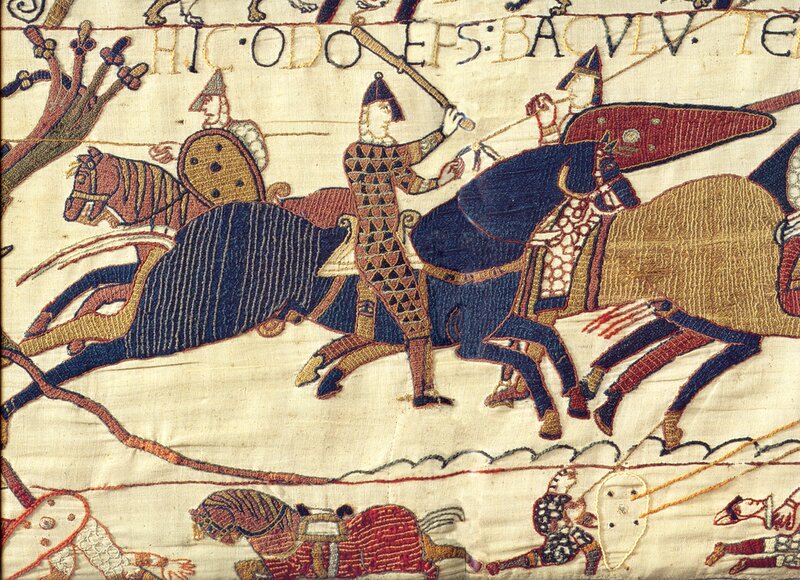
The world-famous Bayeux tapestry is the finest example of Anglo-Saxon wall art from medieval times. It is an embroidered piece of cloth over 200 feet long and about 2 feet high, depicting the events of the Norman Conquest of England in 1066.

